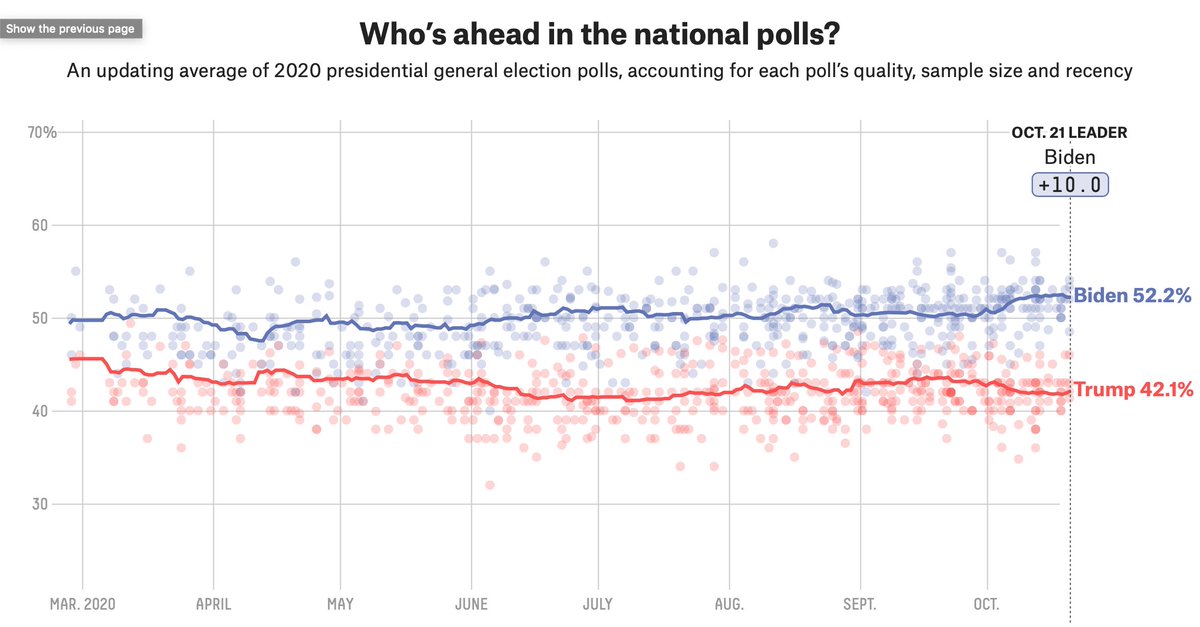
It's definitely a source of uncertainty and different ways that pollsters are handling early and mail voting vis-a-vis likely voter models probably explains some of the differences we're seeing between polls right now.
https://twitter.com/kurteichenwald/status/1319399895007170561
I think there's *probably* more upside risk than downside risk for Democrats here (i.e. that turnout will be bluer than likely voter models project) but I can also imagine scenarios where it leads pollsters to underestimate the R vote instead.
For instance, if you had a fixed estimate of turnout (as X% of registered voters) and you put people who had already voted first in the queue, then mostly GOP election day voters might get crowded out. That's a weird way to do a likely voter model but some pollsters might do it.
A bit less contrived: some "unlikely voters" actually do turn out to vote. So if you screen out a bunch of Republican unlikely voters, but you don't screen out as many of the Dem unlikely voters because they've already voted, you could underestimate the GOP vote share.
OTOH, some people who are deemed to be likely voters *don't* vote. So the upside case for Dems is if 100% (or more like 98% since there's some ballot spoilage) of the already-voted "likely voters" vote whereas say only 85-90% of election-day likely voters actually follow thru.
• • •
Missing some Tweet in this thread? You can try to
force a refresh






